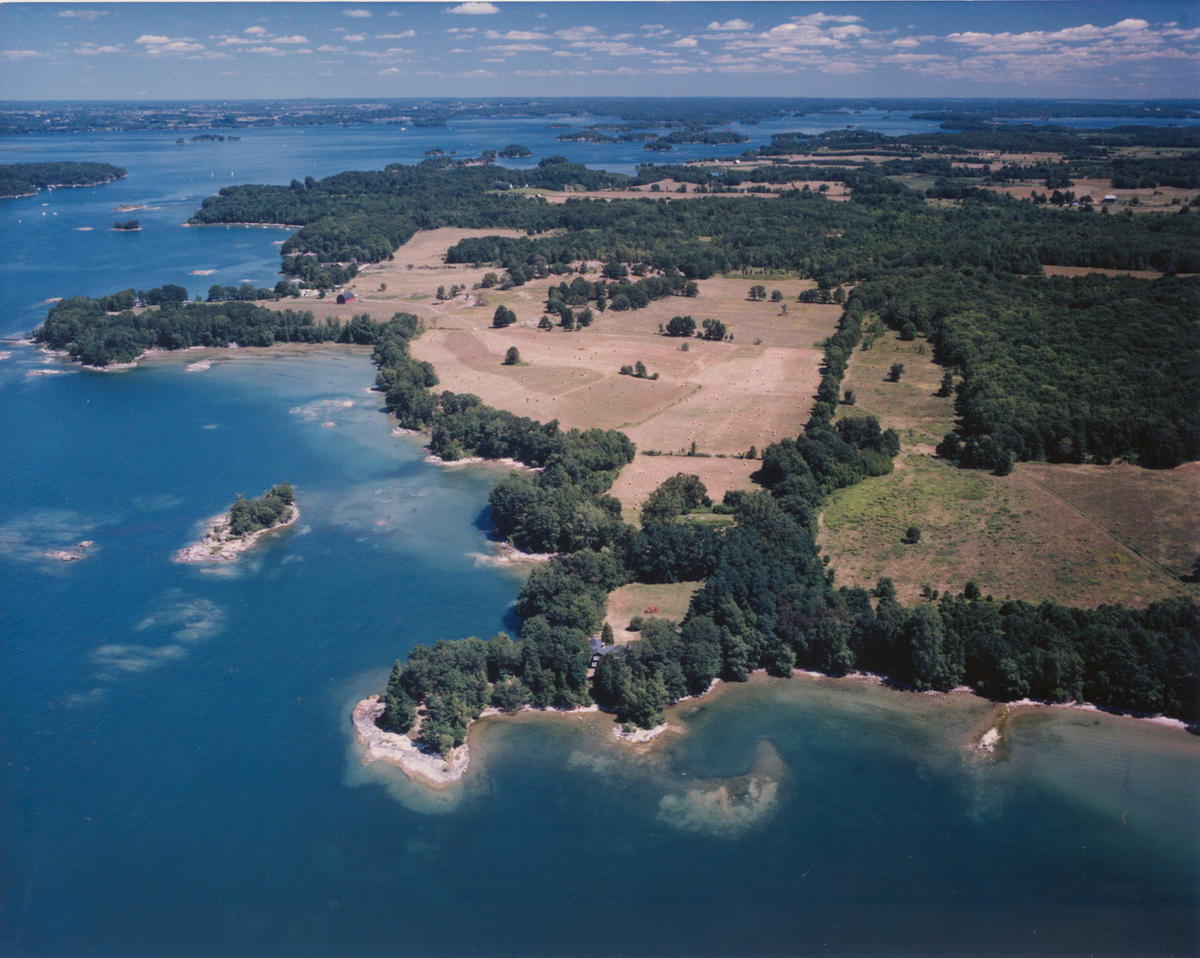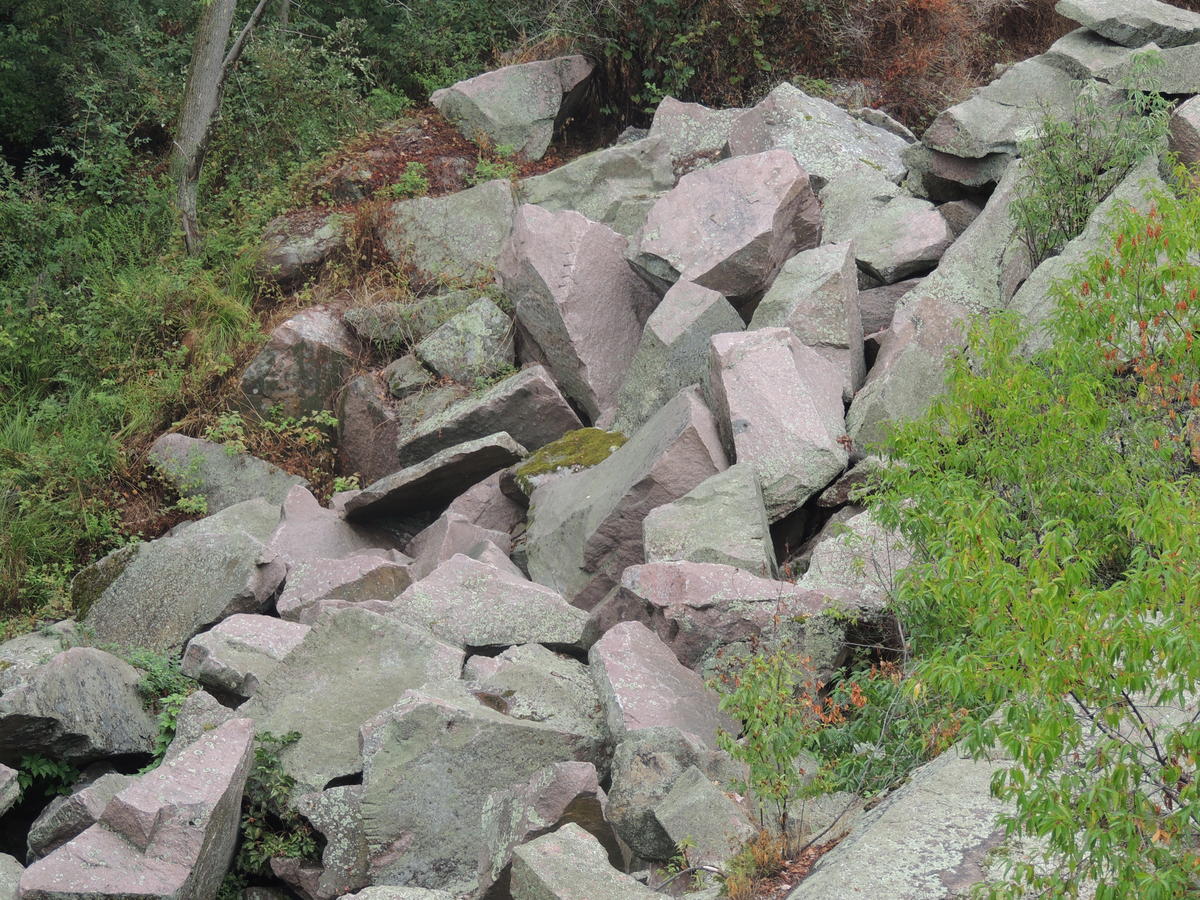by Kristy Carey
New York State has a rich and diverse geologic history, and much of this complex history is evident in the North Country. The story begins with the Canadian Shield, a vast continental rock that forms the basement for much of North America and can be seen at the surface extensively in Canada. The Thousand Islands region is underlain by a portion of the Canadian Shield known as the Grenville Province. These rocks have been radiometrically dated to between 1.1 and 1.3 billion years old, some of the oldest rocks on the planet! However, the most interesting aspect of the geology of this region isn’t the age, it’s the influence that outside forces, such as plate tectonics and glaciation, have had on the rocks that we see today.
The shapes, positions, and sizes of the continents are in constant flux, governed by a powerful, yet discreet, force known as plate tectonics. Ocean basins have repeatedly opened and closed, mountains have formed on continental fringes, and basement rock has been deformed as a result of this exceedingly powerful force.
Several mountain building events in New York State history have been caused by plate tectonics and the opening and closing of oceans (proto- Atlantic oceans) that resemble the current Atlantic Ocean. These large-scale mountain building events were the result of the closing of ancient oceans and the collision of landmasses that are currently North America and Europe, and they also contributed to volcanic activity and deformation of rocks already in place by this time. Plate tectonics has been at work for much of Earth’s history and has been recorded in the rock record across the Adirondack Mountains and the North Country.
Evidence of intermittent openings of the proto-Atlantic can be seen in the widespread sedimentary deposits of Cambrian to Devonian age (roughly 600 to 350 million years ago). Fossils including brachiopods, gastropods, corals, and trilobites record evidence of early life that thrived throughout much of New York State when it was covered by a shallow sea. Like their basement rock counterparts, these fossil-bearing sedimentary rocks have been subject to erosion, particularly when uplifted and exposed. Thus, in the Thousand Islands region we see evidence of large periods of geologic time that are absent. Consider visiting a rock outcrop near Cranberry Creek in Alexandria Bay to see a 600-million-year gap in geologic time. In this roadcut, a Cambrian sedimentary rock approximately 500 million years old, formed in a shallow sea from sand, sits directly on top of a 1.1-billion-year-old Alex Bay gneiss from the Grenville Province!
In the Thousand Islands region, many of the basement rocks of the Grenville Province probably began as mud and clay deposited on the shores of the Canadian Shield when the banks were void of nearly all life, except for some bacteria. These sediments accumulated and cemented together, forming vast deposits encircling the basement rock. Subsequent mountain building events have deformed these rocks, creating interesting new versions that have been subjected to extensive pressure and heat. A beautiful example of this type of rock is the Alex Bay gneiss, a mostly pink metamorphic rock with a chemistry resembling that of granite. Uplift has occurred along a northwestward- trending ridge known as the Frontenac Arch. This Arch extends from the Grenville Province region of Canada to the Adirondack Mountains. Because significant erosion of the overlying rocks has occurred, you can see outcrops at the surface near Alexandria Bay and on Wellesley Island.
The geological events that formed the Frontenac Arch created a unique migratory corridor across the Great Lakes system, allowing for animals to safely pass along a binational land bridge. Stretching northwest from the peaks of the Adirondack Park in New York to the rugged boreal terrain of the Algonquin Provincial Park in Ontario, a granite ridge protrudes from the earth in the general shape of an hourglass. At the center of the hourglass is the Thousand Islands, a vital piece of the puzzle. Known as the Algonquin to Adirondacks (A2A) corridor, it fosters incredible biodiversity, with multiple habitat types to sustain a large variety of life. This makes the conservation of the Thousand Islands region an undertaking of both local and global importance. The geology of the Thousand Islands fostered the incredible wildlife habitats and natural beauty that we value and conserve.
We are lucky to have such a beautiful and geologically interesting place to explore. It is because of these significant mountain building events, coupled with intermittent periods of quiet deposition in shallow waters, and extensive surface erosion that we enjoy such a unique place to live and play, and that diverse wildlife and habitats can flourish.
Kristy Carey, volunteer contributor, has a river home on Wellesley Island. She holds an MS in Geophysics and an MBA from Boston College as well as a BA in Geological Sciences from SUNY Geneseo.





